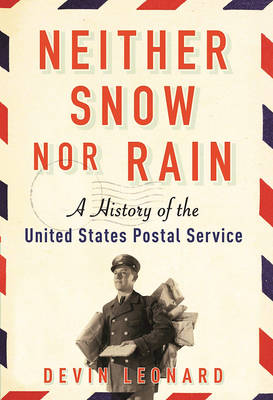I've always been fascinated by the workings of the post office.
I've never understood how they can sort all that mail and get it to where it is going. If you told me that this was involved, I'd believe you.
That why I was so excited to listen to this book about the workings of the post office. I also had just visited the Smithsonian's Post Office museum in Washington D.C. when I started the book. In all my visits to D.C. I had never known about this museum. It is right next to the train station.
Did you know?
- Many of the major roads of the United States were laid out by mail carriers
- Mail used to be delivered up to four times a day in U.S. cities
- There have been a few times when mail volume got so high that the system collapsed
- It was illegal for anyone other than the U.S. mail to deliver letters
- The United States Postal Service is now an independent company that reports to the government instead of a government department
The Post Office is required to deliver everywhere. At times that has required mule trains to the bottom of the Grand Canyon, sled dog teams, and even reindeer. Mandatory rural delivery allowed farmers to get daily newspapers. This kept them informed of the best time to sell crops for the highest profit. It kept everyone in the country informed about events. The United States mail has helped to hold the country together.
I particularly liked learning about the mail trains. Specialist clerks rode these mobile sorting cars, picking up letters at high speed and getting them sorted before the next town. There was one of these mail cars in the museum and a video of former clerks showing their system of sorting. It was amazing. I also learned about Owney, the famous mail dog.
Technological advances have helped the mail be delivered faster and faster. Optical scanners were developed to read printed labels of bulk mailers and now can even read handwriting. After a few passes through the scanners, mail can be sorted into the order in which each carrier will deliver it. I think that's just magical.
One thing that wasn't covered at the museum but was well covered in the book was the Comstock Era. This is a time of strict censorship of the mail. Items that were judged to be obscene were not allowed. This included information on contraception. There was a lot of entrapment by postal inspectors who would order an item and then arrest the person who sent it.
Also not covered in the museum but talked about in the book was the wave of violence at post offices in the 1980s and 90s leading to the phrase "Going Postal."
We all know the Post Office is having problems. First class mail is down as most people send emails instead of letters. The Post Office is not allowed to get involved in electronic forms in the U.S. by law, unlike in other countries. Amazon's new partnership with them to deliver mail on Sundays is helping as is a renegotiation of the labor contracts of Post Office employees.
Those of us who love getting mail hope that they will find a way to survive and thrive.
I'd recommend this book for anyone who love learning about how everyday things work. The audio narration was very well done. The story moved quickly enough to keep my listening interest.
This review was originally posted on Based On A True Story
